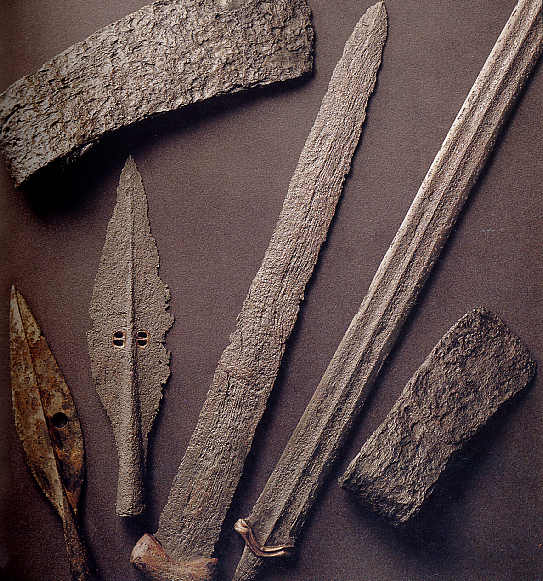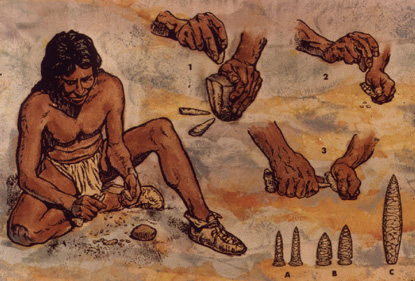by Richard P. Brennan

- In this Article, Brennan talks about how transportation technology developed over time.
- He talked about thr fundamental scientific laws govern the ability of an automobile engine to convert the energy in the fuel to a form that is able to propel the car down the road - First and Second Laws of Thermodynamics.
- Also, the Four-Stroke Otto Cycle Engine Operation was has been discussed.
- The same four strokes - intake, compression, power, and exhaust - can also be carried out by the pistons in the diesel engine.
- A third type of engine, Wankel engine, has also been compared to the otto engines.
- Brennan also talks about the power required to overcome air resistance and the drag coefficient (CD) of typical cars over the past years compared with today's average and tomorrow's potential.
- Regarding this, he talked about innovations such as electric cars, four-wheel steering and airbags,
- In the fourth part of his article, he briefly discussed the Jet Engine Technology.
- In line with this, the innovations in controlling jets, such as the Computer programs preventing the pilot from forcing the plane into a maneuver it was not designed to handle and the new concept called the glass-cockpit.
- Lastly, Brennan talked about the high speed trains, mainly the comparison between Japanese Repulsion MAGLEV System and German Attraction System.
INTRODUCTION TO SCIENTIFIC AND TECHNOLOGICAL ACTIVITIES
- Science and technology comprises different activities like basic research, applied research and technology policy.
- In the past centuries, science and technology developed separately and independently with only occasional, weak, but symbiotic interactions between them.
- Science refers to that dynamic, cumulative systems of verifiable concepts, principles, methods, laws, theories, and processes which seek to describe, understand, and predict natural phenomena.
- On the other hand, technology basically refers to the application of science.
- Since many are unfamiliar to some scientific definitions and interrelationships, this article sought to define terms based on the standard of UNESCO and OECD definitions.
- Distinctions between related terms and activities, like the differences between research and experimental development, basic research and applied research, engineering and innovation.
by John Ziman

- Ziman discusses how Natural Science has been transforming Human Society.
- He discussed of the debates / arguments arising from this, such as 'all science is good science', 'scientific research is away of personal purification', and 'the support of science by the state is enlightened self-interest.'
- He said that we are reponsible citizens of the world and that should help us think constructively.
- In this article, he talked about the aim of the book, "The Force of Knowledge: Scientific Dimensions of Society", which is to sketch out a background for such debates.
- The main part of the article talks about the place of Science in Society.
- The history of science over many centuries, is represented as a continuous expansion at the expense of religion, philosophy and the humanities, which are left to scratch a meagre living in a few barren corners.
- Science and religion are shown merging in an area that is also occupied by philisophy, which draws especially heavily on theory - the special art of `Knowing Why'.
- Also, social organizations, material needs and material culture have been discussed.
- Ziman said that inorder to to make sense of the present state of science, we should know that we cannot avoid an historical account.
- In the end, he said that the book deals with particular individuals and the main theme is the transformation from this 'cottage industry/village market' system to the contemporary ' factory production/planned ecomony' style.
SCIENCE AND TECHNOLOGY IN THE IRON AGE*
by J. D. Bernal

- The whole article is about the innovations in the Iron Age including the innovations in fields of Economics, Politics, Literature, Religion and, of course, Science.
- The civilization of the Iron Age, wherever it was developed, was less orderly and peaceful than that it replaced, but it was also more flexible and rational.
- J.D. Bernal primarily dealt with the Ireon Age in the Mediterranean area - the classical civilization of the Greeks and Romans.
- The author talks about the impact of the discovery of iron in the society.
- In tools, such as axe and plough, bronze has been replaced with iron.
- Early iron age cities rarely had populations of more than a few thousands, as against the hundreds of thousands of bronze age cities, giving rise to the successive forms of oligarchy, tyranny, and democracy.
- Also, the vulgarization of elaborate systems of writing - heiroglyphics and cuneiform - is an important iron age development for the origin of science.
- The Phoenicians and the Hebrews - including the Bible, which stressed the ideas of Law and of Righteousness - were also discussed.
- The Greeks were the most successful in the exploitation of the new conditions of the Iron Age - having the double advantage of being more removed from the conservative influence of the older civilizations while being able to make extensive use of their traditions.
- By the middle of the second century B.C. the Hellenistic empires were collapsing in anarchy and under the weight of the more vigorous power of Rome, initiating the decadency of Classical Science.
TECHNOLOGY AND SOCIETY IN THE STONE AGE
- According to Forbes, "Technology is as old as man himself."
- He pointed out that man was evidently a "tool-making primate" from the day when the first human-like creatures roamed on earth, some 25 million years ago.
- In this article, he tackled about the innovation and development of tools from stones.
- The shaping of such tools never became a habit with apes; but it did become a habit with men.
- Elioths, the first stone tools, were pebbles already pre-shaped by nature and simply picked up from a riverbed.
- Man also explored "fire."
- Heated stones were used in cooking and even in growing embers.
- But man at that time did not use stones as their tools in their everyday living; they also use hammer and a stone anvil.
- In mining, prehistoric men probably knew where to dig for flint, presumably by following surface outcrappings.
- Although early man used wooden and bone tools, only the stone tools survived.



No comments:
Post a Comment